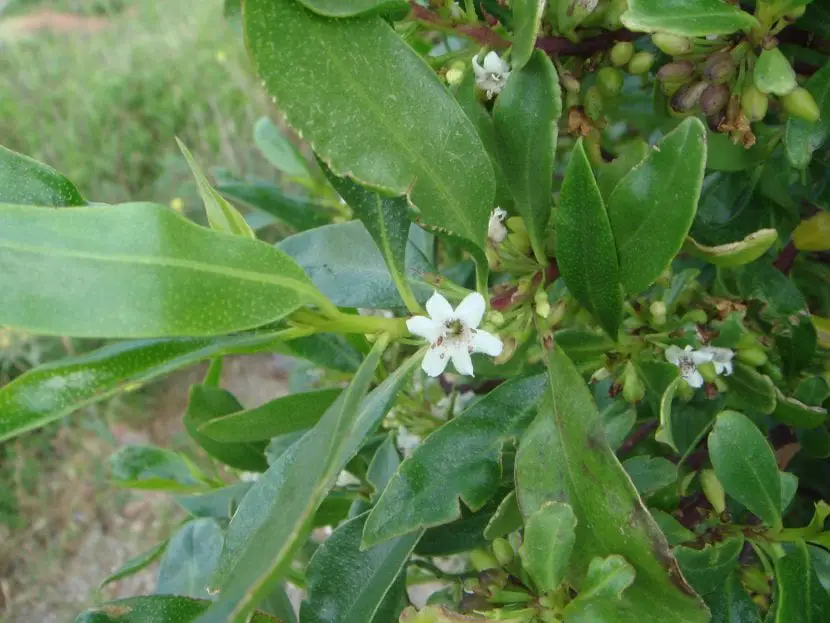
Image – Wikimedia / Xemenendura
Do you have room for an evergreen tree that blooms in late winter? If you answered yes, I will introduce you to the happy of the short-sightedan ideal plant to grow in warm or mild climates, and that I am sure will give you great satisfaction. Why? Because it is very easy to care 😉.
In addition, its flowers, although they are not more than two centimeters wide, are of a beautiful white color with purple tips. Know their cares.
Origin and characteristics

Image – Wikimedia / Krzysztof Ziarnek, Kenraiz
It is an evergreen tree (it loses its leaves little by little throughout the year, and not in a certain season) native to New Zealand. Its scientific name is the happy of the short-sightedalthough it is popularly known as myopore, evergreen or transparent. It grows to a maximum height of 10 meters.
The leaves are lanceolate, with entire or somewhat serrated edges, and are covered by small translucent glands. The flowers, which sprout from late winter to mid-spring, are 1,5 to 2cm wide, white and hermaphroditic.. The fruit is a globular drupe of 6-9mm in diameter that contains an oval-quadrangular seed.
Uses
The myopore, apart from being used as an ornamental, either as an isolated specimen, in hedges or as a potted plant, it is necessary to know that rubbing the leaves on the skin will repel mosquitoes.
Of course, it should not be consumed under any circumstances, since it contains ngaione, which is a toxin that can cause disease, and even death in sheep, pigs and cattle.
What are cares?

Image – Flickr / David Eickhoff
If you want to have a copy, we recommend that you provide it with the following care:
- Location: it must be outside, in full sun.
- Earth:
- Garden: grows in a wide variety of soils, although it prefers those that are fertile.
- Pot: universal growing substrate.
- Irrigation: water 3-4 times a week in summer, and every 4-5 days the rest of the year.
- Subscriber: in spring and summer it is advisable to pay with guano, compost or others ecological fertilizers.
- Multiplication: by seeds in winter (they need to be cold before germinating) and cuttings in spring.
- Rusticity: it resists weak frosts down to -5ºC, but if not lower than 0º better.
What did you think of the the happy of the short-sighted?
